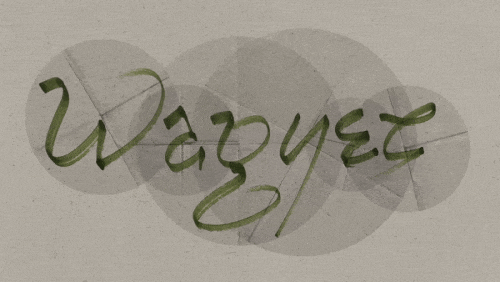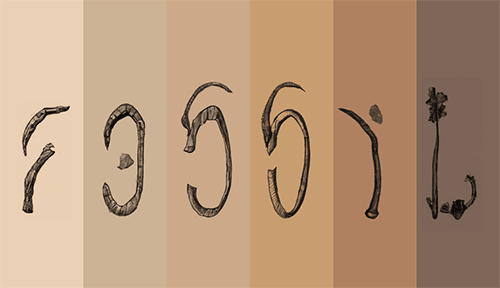 Slidograms
Slidograms 
You could call it translatogram, but I prefer slidogram. Now, can you imagine how this one would look like?
Hmmm… I guess that every letter would move independently?
That’s right! A slidogram would have each glyph move in some direction: horizontally, vertically or diagonally.
Here is an example. It’s the piece “Dye Key” by Vassilis Stergioudis.

Here, the D slides upward and reappears from the bottom, forming a K. The E and Y slide horizontally and change places.
Now let’s look at what happens when every glyph shares the same movement.
Side note 1: When every glyph slides vertically in the same direction, we get a vertical slidegram. This is because the vertical movement of every letter in a word results in a vertical movement of the whole word. Actually, every direction (vertically, horizontally or diagonally) applied to all letters, results in a slidegram.
Side note 2: When every glyph slides horizontally, with some letters moving left and some right, we get an anagram! Hooray!
Wait, what?
Yes. An anagram is a word that has it’s letters shuffled, producing a new word. Here’s the words ‘listen’ and ‘silent’.

I’ve seen anagrams but I’ve never thought they are ambigrams.
Well, maybe they are not so powerful, visually speaking, but they are a sub-type of slidograms. Every letter slides horizontally. So, technically, they are.








